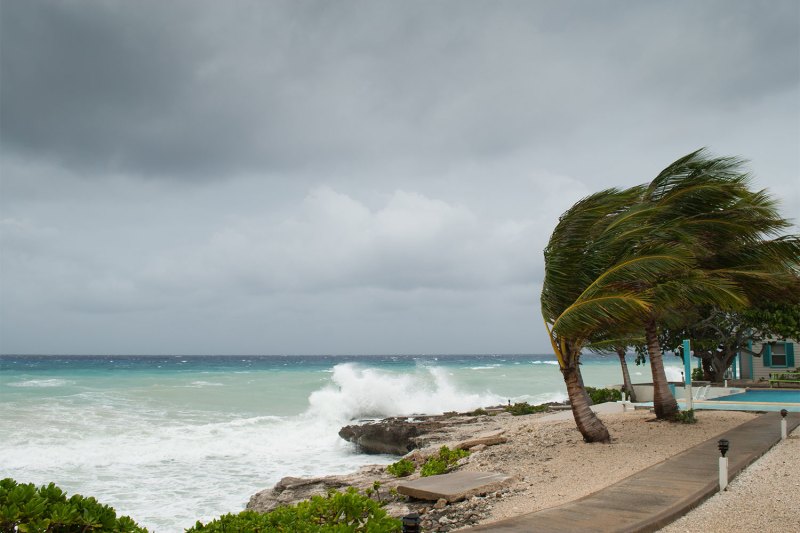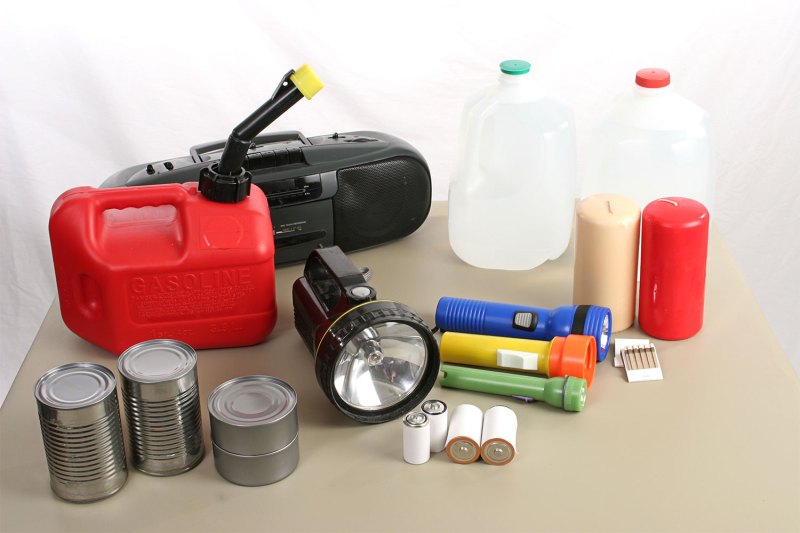OK 2020, let’s do this! On top of pandemics, social upheaval, and a contentious election, let’s strap in for hurricane season!
If you don’t live on the East Coast of the United States, you’ll probably not have to weather too many major tropical storms this year, but as most of the expert advice we received on how to prepare for a hurricane and what to during and after the storm can also apply to other natural disasters, you might want to take notice if you live in Tornado Alley, an earthquake or wild fire zone (hey, CA!), a major flood zone, or anywhere else a disaster is possible, which is anywhere. Period.

We checked in with survival and preparedness expert Christian Schauf, the man behind the company Uncharted Supply Co., and Simon Huck, co-founder of Judy, a company producing emergency kits as well as an app that can deliver real-time information during a disaster, helping you and your loved gain the best chance for survival.
But of course you know how chance favors the prepared mind? It favors the prepared household, too. So we started off our discussion with both gents there.
The Manual: “What are the basic steps people need to take to prepare for a serious storm?”
Simon Huck: “Your biggest sense of relief will undoubtedly come from knowing that your family is ready and protected for a serious storm. The first step in doing that: Make an emergency plan. Sit down with your family to discuss your plan. Ensure everyone is on the same page with communication, evacuation plans, a back-up meeting place, and emergency contacts. You should also have an emergency kit, whether you assemble yourself or buy a pre-assembled kit like JUDY. And you need at least three days’ worth of supplies for everyone in your family.”

Christian Schauf: “Information is power. Make sure you have a way to communicate or at the very least, get information from authorities. We include a NOAA weather band radio which features a crank for charging in all of our Seventy2 and Seventy2 Pro kits. This means that no matter where you are, or if you have [lost] power, you can access critical information … Preparing is critical [but so is] practice. People vastly underestimate what adrenaline does in an emergency. And many times people forget that in an emergency it may be dark, cold, wet, smoky. Practicing provides experience and that provides calm when things get real.”
TM: “What are common mistakes people make or misconceptions they hold about storms?”
SH: “Many people think that storms won’t affect them, or even if they do, there is nothing they can do to prepare for them. This couldn’t be further from the truth. It is proven that having an emergency plan and supplies on hand improves your resilience during severe weather events. Fact.”
CS: “I think generally our existence is so safe that people forget how dangerous things can become. We see events on the news but they don’t affect us. It feels fake. Having a healthy respect for storms and reacting quickly and before things become too serious is the most important first step.”
TM: “What are a few essential pieces of gear someone needs to stock to plan for a hurricane?”
CS: “The human body needs clean air, survivable temperature (not too hot or cold), clean water, food, and potentially first aid. I’d also add communications to that list. Make sure you can keep up on what’s going on. If you’re fleeing, make sure you can keep warm or cool, administer first aid, breathe, and have water to drink.”
SH: “Food, water, a power source, a hand crank radio, and a First Aid kit at least.”
TM: “What should you do to stay safe during the actual storm and in its aftermath? And what to avoid?”
SH: “In case you’re not able to safely leave your house, establish a safe space for sheltering in place. [Ideally one] that’s windowless and not prone to flooding. Identify a place to store any outdoor furniture including toys, gardening tools, trash cans, etc and move indoor furniture and valuables to higher floors of your home and away from stairs and exits.”
CS: “It depends on the storm, where you are, and a variety of other factors. The best thing you can do is listen to authorities and move quickly. Typically that means fleeing the danger zone before it becomes dangerous. If you can’t flee, there are a variety of things to do from boarding up windows and doors to making sure you have a safe place to ride out the storm, but even that is dependent on whether it’s a hurricane (stay above flood levels) or tornado (getting down into the basement). Understand where you live, the dangers most likely to affect you, and prepare for all situations!
In preparing for a hurricane specifically, these are a few of the supplies that may well make the difference between the storm being a natural disaster generally, or a disaster for your household specifically:
- Boards for the Windows: or sheets of wood, more accurately. Don’t forget doors.
- Lots of Water and a Water Filter: Your stores may run out.
- Go-Bag and/or First Aid Kit: check our Uncharted Supply, Judy, or others, just get something.
- Batteries, Lots of Batteries and Power Banks: Dead phone = all alone.
- Safety Gear: If you’re near sea level, consider a boat. Anywhere, consider reflective clothing and helmets.
And always keep a pair of shoes or boots nearby; when disaster strikes, you don’t want to caught in a Die Hard-type situation with your feet.
Editors' Recommendations
- The 3 Best Treadmill Workout Tips, According to Fitness Experts
- Survivorman Les Stroud Has Shown a Generation of Men How to Survive in the Wild
- How to Embrace the Winter, According to Eric Larsen


